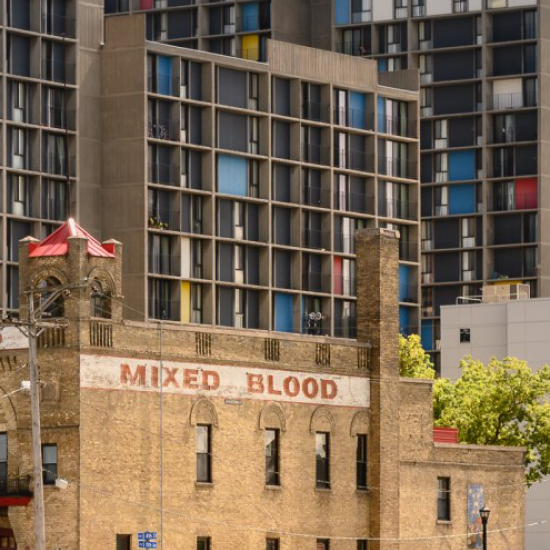Mixed Blood Theatre and “Being a Good Neighbor”: Measuring How the Arts Impact a Neighborhood
“Being a good neighbor has helped Mixed Blood to focus on what really matters—which is the people who make up this vibrant neighborhood.” – Keri Clifton, former Mixed Blood Theatre chief engagement officer
In 2019, Mixed Blood Theatre and Wilder Research worked together to figure out how to measure their impact in the Cedar Riverside neighborhood of Minneapolis. As artist-in-residence Mark Valdez put it, “How do we measure the organizational equivalent of giving eggs to your neighbor?”
Essentially, we wanted a way to measure three things: 1) if Mixed Blood’s staffing and operating model promote positive neighborhood change, 2) if their programs and events build positive relationships among them and their neighbors, and 3) if their neighbors trust that Mixed Blood has their best interest at heart.
How did Wilder Research help Mixed Blood measure their neighborhood impact?
The approach we came up with clarifies what “being a good neighbor” means for Mixed Blood and then offers some ways for Mixed Blood to assess whether they’re living up to these goals. For Mixed Blood, being a good neighbor looks like:
- A commitment from Mixed Blood to the neighborhood
- Making art with their neighbors
- Neighbors connecting with each other through Mixed Blood
- Neighbors seeing value in Mixed Blood’s work
- Neighbors seeing Mixed Blood as an integral part of the neighborhood

What kind of approach worked best?
At first, we counted things related to these goals, like how many neighbors were coming to events and performances. But counting didn’t work that well. It provided numbers for grant reports, but few insights about Mixed Blood’s neighborhood impact. This experience reminded me of a question from two leading arts researchers: “Is the attempt to understand, assess, and quantify the effects of artistic engagement a pointless exercise?”
This researcher offers different advice for people interested in measuring the impact of the arts. They say to stop collecting audience data at the end of a project. Instead, we should embed research into the artistic process by collecting lots of data from many different people throughout a project’s life cycle. In other words, we need to find ways to involve everyone in the research process, regardless of whether they call themselves a researcher.
This approach brings up some big questions:
- What if we embed research into everything Mixed Blood does by training their artists and neighbors to do research? And then—what if we trust them to adapt traditional research methods to best meet their needs?
- What if Mixed Blood had a “researcher-in-residence” to artfully imagine how research functions in their organization? What insights might arise from seeing research as an art—as well as a science?
Questions like these ensure that Mixed Blood’s research efforts provided meaningful insights for everyone involved in their work—neighbors, artists, arts administrators, and funders.
How did we use this approach to help Mixed Blood learn about its neighborhood impact?
To see an example of this evaluation approach in action, take a look at the evaluation report from Mixed Blood’s Project 154 evaluation. In Project 154, Mixed Blood talked with neighbors about their health concerns and then communicated these concerns to neighborhood healthcare providers through art.
The evaluation shows how Project 154 contributed to Mixed Blood’s goal of being a good neighbor. In particular, it shows how the project helped neighbors connect with each other as well as the ways that neighbors appreciated the project.
Photo courtesy of Rich Ryan.
